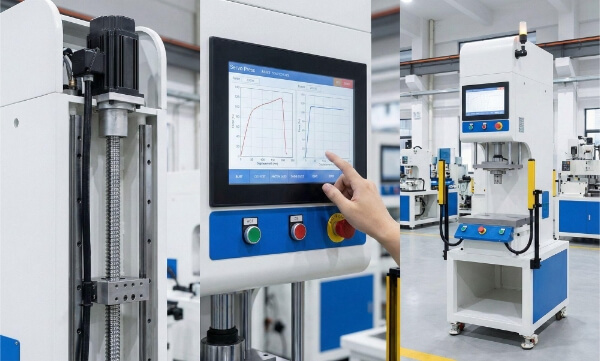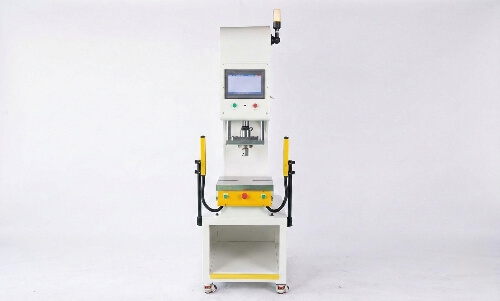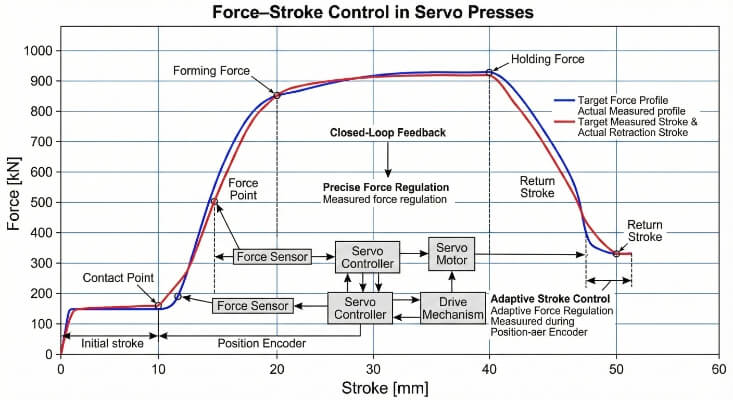구리는 배선, 전자제품, 배관 부품 등 모든 곳에 사용됩니다. 많은 사람들이 구리에 자성이 있는지 궁금해합니다. 이 질문은 자석과 관련된 부품을 다루는 엔지니어, 제품 디자이너, 구매자에게 중요한 질문입니다. 이 글에서는 구리가 자기장 주변에서 어떻게 작용하는지 설명합니다.
이 글을 마치면 구리가 자성과 관련된 프로젝트에 어떻게 적용되는지 더 잘 이해하실 수 있을 것입니다. 그렇다면 구리는 왜 이런 식으로 작동할까요? 실제 업무에 적용할 수 있도록 명확하게 분석해 보겠습니다.
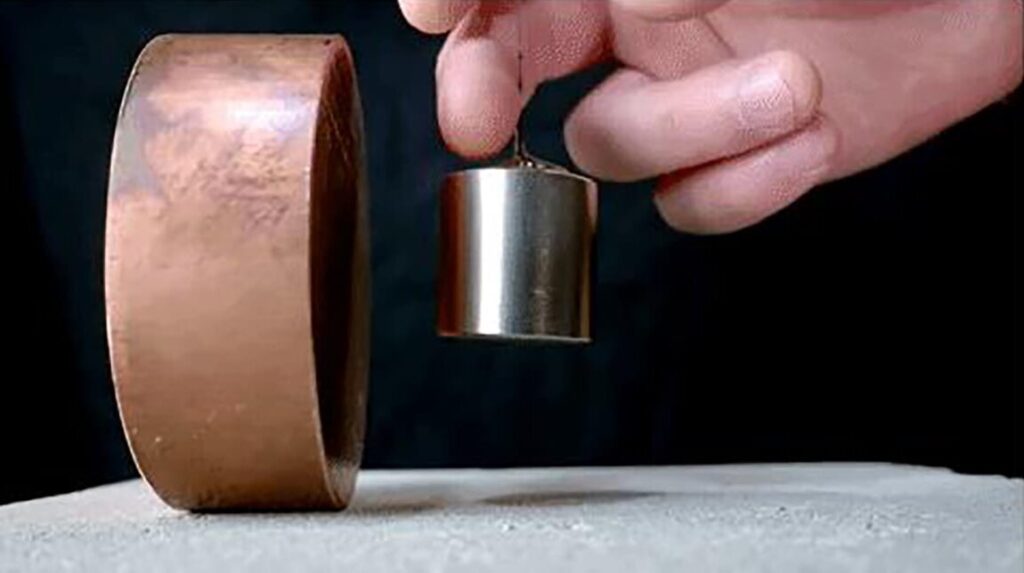
재료가 자성을 띠는 이유는 무엇인가요?
물질은 원자가 자성을 지지하는 방식으로 정렬되어 있을 때 자성을 띠게 됩니다. 철과 같은 금속에서는 전자가 같은 방향으로 회전합니다. 이렇게 하면 자기장이 생성됩니다.
이러한 물질을 "강자성"이라고 합니다. 강자성 물질은 자석에 단단히 달라붙습니다. 강철, 코발트, 니켈도 이 그룹에 속합니다. 강자성 물질은 내부 구조가 자석에 반응할 수 있습니다.
일부 금속은 이러한 구조를 가지고 있지 않습니다. 이러한 금속은 전자가 임의의 방향으로 회전합니다. 따라서 약하거나 자성을 띠지 않습니다. 예외적인 경우에는 여전히 약간의 효과가 나타날 수 있습니다.
간편한 자기 분류
과학자들은 자기장에 반응하는 방식에 따라 재료를 그룹화합니다. 이러한 그룹은 어떤 금속은 자석에 달라붙고 어떤 금속은 달라붙지 않는 이유를 설명하는 데 도움이 됩니다.
강자성 재료
강자성 물질은 자석에 강하게 끌립니다. 강자성 물질의 원자는 물질 내부에 자기장을 형성하는 방식으로 정렬되어 있습니다. 철이 가장 잘 알려진 예입니다.
자화되면 이러한 물질은 그 자체로도 자석이 될 수 있습니다. 그렇기 때문에 변압기, 모터, 자성 도구에 사용됩니다.
상자성 재료
상자성 물질은 자석에 약하게 끌립니다. 자성을 유지하지 못합니다. 원자가 잘 정렬되어 있지는 않지만 자기장에 약간 반응합니다.
이 반응은 일상 생활에서 알아차리기에는 너무 작은 경우가 많습니다. 이를 측정하려면 특별한 장비가 필요합니다.
반자성 재료
반자성 물질은 서로 반대로 반응합니다. 자석은 이들을 약간 밀어냅니다. 전자는 외부 자기장에 저항하는 작은 자기장을 생성합니다.
이 효과는 매우 약해서 간과하기 쉽습니다. 물, 나무, 일부 금속을 포함한 많은 물질에서 발생합니다.
구리는 어떤 범주에 속할까요?
구리는 반자성 물질입니다. 자석을 끌어당기지 않습니다. 약간 저항합니다.
힘이 작기 때문에 눈으로 볼 수 없습니다. 하지만 특정 실험에서는 눈에 띄게 나타납니다. 예를 들어 강한 자석이 구리 튜브를 통과하면 속도가 느려집니다. 이는 구리의 반자성 반응과 그것이 생성하는 전류 때문에 발생합니다.
구리는 자성이 있나요?
구리는 자성이 아닙니다. 구리선이나 파이프를 자석 옆에 놓아도 아무 일도 일어나지 않습니다. 달라붙지도 않고 움직이지도 않습니다.
구리는 자성을 지지하는 원자 구조를 가지고 있지 않기 때문입니다. 구리의 전자는 자기장을 만들기 위해 정렬되지 않습니다. 따라서 철이나 강철과 달리 구리는 정상적인 조건에서 자석에 인력을 보이지 않습니다.
구리는 자기장에 대해 약간 밀려납니다. 이 효과는 매우 약합니다. 강력한 자석이나 특별한 설정이 필요합니다. 구리의 반응은 자기 제동이나 유도 충전과 같은 첨단 시스템에서 구리를 가치 있게 만드는 요소 중 하나입니다.
구리는 자성이 없기 때문에 전자제품에서 잘 작동하는 이유 중 하나입니다. 구리는 자기 신호를 방해하지 않으므로 자성 부품 근처에서 안전하게 사용할 수 있습니다.
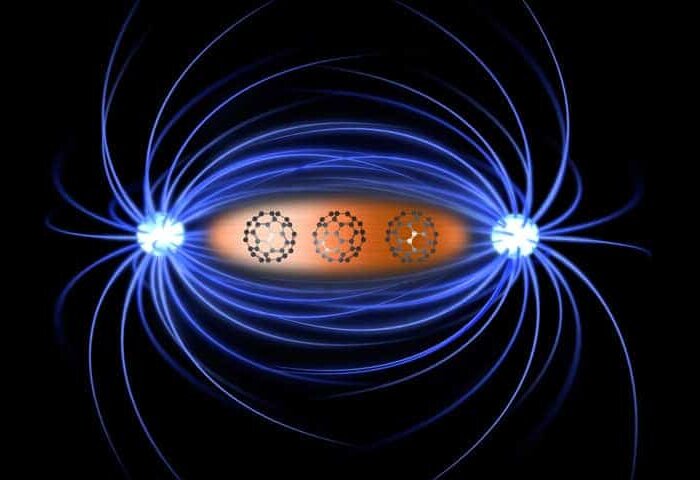
구리의 비자성 특성
구리는 정상적인 조건에서 비자성을 유지합니다. 이는 구리의 자연적인 원자 구조와 구리가 자기장에 반응하는 방식에서 비롯됩니다. 이를 세 가지 간단한 부분으로 나눠 보겠습니다.
반자성
구리는 반자성입니다. 즉, 자석 근처에 놓으면 반대 방향으로 매우 약한 자기장을 생성합니다. 이 효과는 구리를 약간 밀어냅니다.
힘의 크기가 작기 때문에 보통은 느끼지 못합니다. 하지만 실험실 테스트나 특수 기계에서는 이 반응을 측정할 수 있습니다. 이 반자성 특성으로 인해 구리는 철과 같은 금속과 다르게 작동합니다.
전자 구성
구리의 원자는 안정적인 전자 설정을 가지고 있습니다. 외부 전자는 균형 잡힌 방식으로 사용 가능한 에너지 준위를 채웁니다. 이 때문에 자력이 남지 않습니다.
자성 금속에서는 짝을 이루지 않은 전자가 같은 방향으로 회전합니다. 구리에서는 대부분의 전자가 쌍을 이룹니다. 전자의 스핀은 서로 상쇄됩니다. 이것이 구리가 자성을 띠지 않는 이유입니다.
합금 원소
구리를 다른 원소와 혼합하여 합금을 만들면 상황이 약간 달라질 수 있습니다. 일부 합금은 철이나 니켈과 같은 자성 금속을 포함할 경우 약한 자기 특성을 보입니다.
그러나 대부분의 구리 합금과 같은 황동 또는 청동-비자성을 유지합니다. 특히 추가된 금속도 비자성인 경우 구리의 원래 특성을 유지합니다.
구리의 자기 거동에 영향을 미치는 것은 무엇인가요?
구리는 본질적으로 비자성이지만 특정 변화로 인해 자성 환경에서 반응하는 방식에 영향을 미칠 수 있습니다. 이러한 변화는 구리를 자성으로 만들지는 않지만 동작에 약간의 영향을 줄 수 있습니다.
불순물
순수한 구리는 비자성입니다. 하지만 우연히 또는 정제 과정에서 소량의 다른 원소가 섞이면 그 특성이 바뀔 수 있습니다.
철이나 코발트와 같은 자성 원소가 불순물로 존재하면 약한 자기 반응을 일으킬 수 있습니다. 아주 작은 미량이라도 민감한 시스템에는 영향을 미칠 수 있습니다.
합금화
구리를 다른 금속과 혼합하면 구리의 작동 방식이 달라질 수 있습니다. 예를 들어 철이나 니켈을 첨가하면 합금의 자기 특성이 약해질 수 있습니다. 이러한 금속은 자성을 띠기 때문에 최종 소재에 영향을 미칩니다.
하지만 모든 구리 합금이 자성을 띠는 것은 아닙니다. 표준 구리 합금인 황동과 청동은 아연이나 주석과 같은 원소를 사용하기 때문에 자성이 없는 상태를 유지합니다.
가공(냉간 가공/열처리)
기계적 또는 열적 변화는 구리의 구조에 영향을 줄 수 있습니다. 구부리거나 압연하는 등의 냉간 가공은 입자 구조를 변화시킵니다. 구리를 자성으로 만들지는 않지만 자기장과 상호작용하는 방식에 약간의 영향을 줄 수 있습니다.
열처리 내부 구조를 바꿀 수도 있습니다. 하지만 그 효과는 미미하며 구리를 자성 물질로 바꾸지는 않습니다.
구리는 자기장에서 어떻게 반응할까요?
구리는 자성이 아니지만 자기장에 노출되면 특히 움직임이 있는 경우 흥미로운 방식으로 반응합니다. 이러한 효과는 구리의 자성이 아닌 전기 전도성에서 비롯됩니다.
렌츠 효과와 와전류
자석이 구리 근처에서 움직이면 금속 내부에 전류를 생성합니다. 이를 와전류라고 합니다. 이 전류는 구리 내부에서 소용돌이칩니다.
렌츠의 법칙에 따르면 이러한 와류는 자기장을 생성합니다. 이 새로운 자기장은 움직이는 자석을 밀어냅니다. 떨어지는 자석을 구리관을 통해 떨어뜨렸을 때 속도가 느려지는 이유가 바로 이 때문입니다.
구리가 자석에 끌린다고 해서 이런 현상이 발생하는 것이 아닙니다. 구리가 움직이는 자기장에 의한 변화에 저항하기 때문에 발생합니다. 이것이 바로 자기 제동 시스템과 유도 가열의 핵심 원리입니다.
자석에 대한 구리의 반발력 시연하기
집이나 매장에서 간단한 테스트를 해볼 수 있습니다. 수직 구리 파이프에 강한 네오디뮴 자석을 떨어뜨려 보세요. 거의 둥둥 떠서 천천히 떨어지는 것을 볼 수 있을 것입니다. 이는 마술이 아니라 와전류가 작용하는 현상입니다.
또 다른 예는 평평한 구리판 위에 자석을 빠르게 움직이는 것입니다. 약간의 저항이 느껴질 것입니다. 이것이 바로 유도 전류로 인한 반발력입니다.
이러한 효과는 강한 자석과 두꺼운 구리 부품에서 더 잘 나타납니다. 하지만 구리가 자성을 띠지 않더라도 구리가 어떻게 반응하는지를 보여줍니다.
결론
구리는 자성이 아닙니다. 자석에 달라붙거나 자화되지 않습니다. 구리의 원자는 자기 정렬을 지원하지 않으며, 구리의 전자는 자기 효과를 상쇄하는 방식으로 쌍을 이루고 있습니다. 하지만 구리는 움직이는 자기장에 노출되면 독특한 방식으로 반응합니다. 구리는 움직임에 저항하는 와전류를 생성합니다.
비자성 구리 부품 또는 맞춤형 구리 부품을 찾고 계신가요? 팀에 문의 를 통해 다음 프로젝트에 대한 빠른 견적과 전문가 지원을 받을 수 있습니다.
안녕하세요, 저는 케빈 리입니다

지난 10년 동안 저는 다양한 형태의 판금 제작에 몰두해 왔으며 다양한 워크숍에서 얻은 경험에서 얻은 멋진 통찰력을 이곳에서 공유했습니다.
연락하세요

케빈 리
저는 레이저 절단, 굽힘, 용접 및 표면 처리 기술을 전문으로 하는 판금 제조 분야에서 10년 이상의 전문 경험을 갖고 있습니다. Shengen의 기술 이사로서 저는 복잡한 제조 문제를 해결하고 각 프로젝트에서 혁신과 품질을 주도하는 데 최선을 다하고 있습니다.

